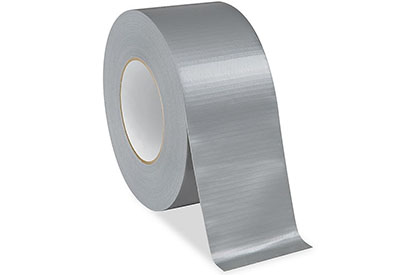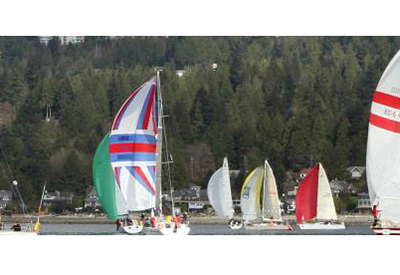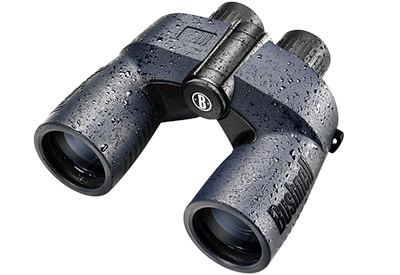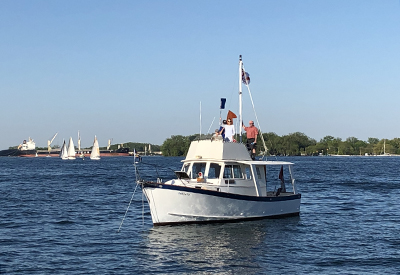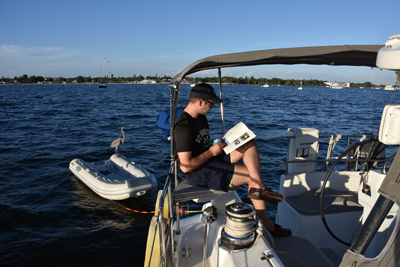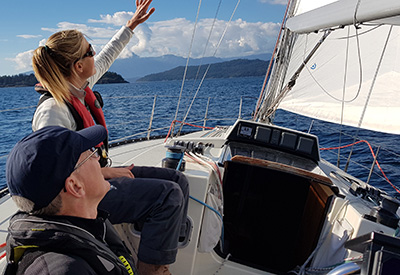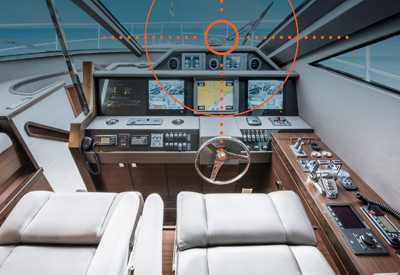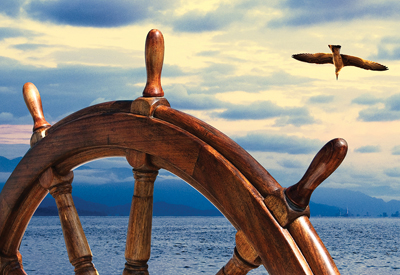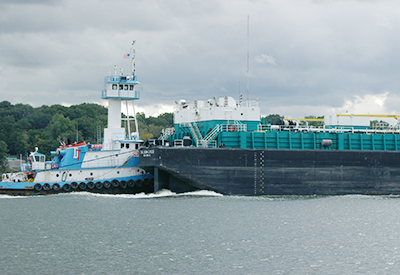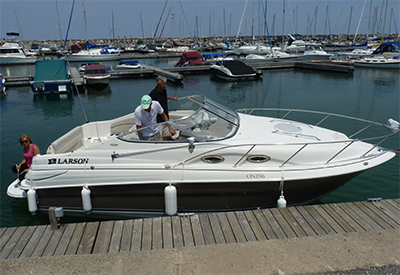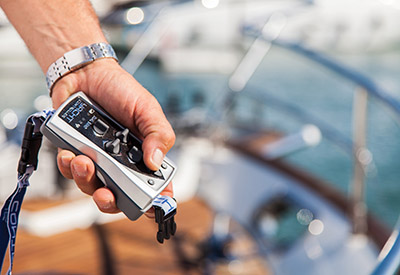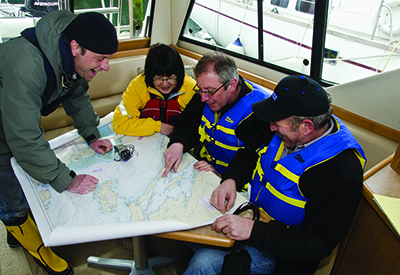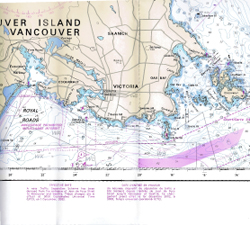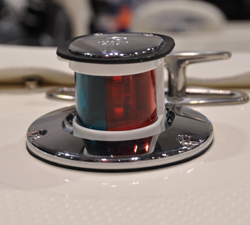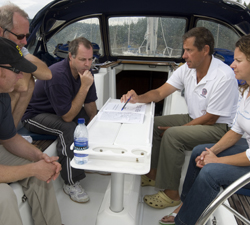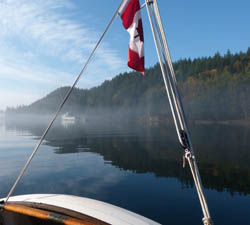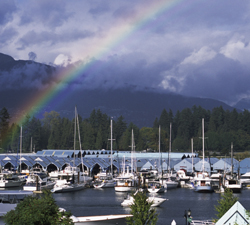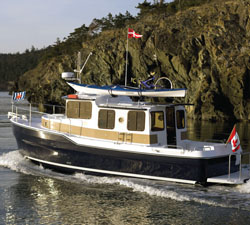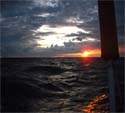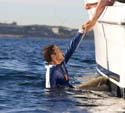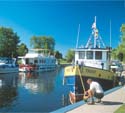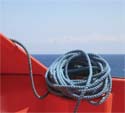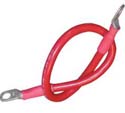December 18, 2019
10 Top Reasons to Never Leave Port Without a Roll of Duct Tape
Purchase your copy of the BRAND NEW Ports Georgian Bay 2020 Edition at the Toronto International Boat Show! Or pre-order a copy TODAY on the CY Store.
November 4, 2019
How do we get into sailing?
It’s easy just go to your local yacht club online or in person and sign onto their crew bank. I guarantee that you won’t have to wait long to get an invite, whether you are an experienced sailor or not. Boat owners are always looking for crew that are physically fit and will commit to a series of races.
October 8, 2019
PORTS: Can’t miss tips: Preventing Seasickness
The new editions of PORTS Cruising Guides, from the publishers of Canadian Yachting will be available in January!! Look for upcoming details on how to order your copy early!
September 25, 2019
PORTS: Can’t miss tips: Understanding Binoculars
Binoculars are essential for any cruising destination. Spotting potential water hazards, basic navigating and identifying points of interest along the shoreline or waterway are just a few of the many applications. There are a wide variety of sizes, models and focal lengths available.
September 10, 2019
Sharing Race Management skills
For the past 15 – 20 years, the Royal Canadian Yacht Club’s race management was primarily constructed with paid staff. This was done initially to give a group of development team and national team sailors a flexible job so they could train and earn money towards their campaigns.
March 28, 2019
Dear Doris, Help! My Boyfriend Doesn’t Sail
I grew up in a sailing family. My mother comes from a long line of sailors, my dad works in the marine industry and my brother and I have travelled up and down the eastern coast racing with and against each other. Yet, somehow, I had fallen in love with a No,ON-sailor (please note, the use of capital letters).
March 27, 2019
Sea to Sky now RYA recognized training centre
Sea to Sky Sailing has just been approved as the only Royal Yachting Association (RYA) recognized training centre on the west coast of North America just in time to deliver an epic 2019 season!
May 5, 2017
How to Aim Your Boat
How often have you seen boats weaving their way across the water, unable to keep heading in a straight line? Maybe you have even experienced this snaking yourself.
March 31, 2017
Top Dead Centre
‘Top dead centre’ is the position of the wheel that allows you to steer your boat straight with no back and forth movement of the wheel. When the boat is moving straight, your drive(s) or rudder(s) is(are) straight.
August 31, 2016
Confident Sailor / Reluctant Sailor – Part 2: Getting Ready – Skipper and Crew
In this second of three parts, we will explore preparing for a longer cruise from the people side. Later, in the third instalment we will look at final preparation of the boat…
May 10, 2016
No More Captain Crash! Embarrassment-Free Docking
While docking a sailboat has remained largely unchanged over the centuries, power boat designs have changed dramatically, even over just the last four decades…
December 21, 2015
Docking and Close-quarters Manoeuvering Made Easy
Comfort and convenience are important factors both to keep boaters enjoying boating as well as to attract new people into boat ownership. Perhaps the most significant regular challenges for all boaters are docking and close quarters manoeuvering. Getting in and out of your slip or into the fuel dock on a busy day can be tricky, especially if the wind is up or currents are running. In 2005, Volvo Penta introduced their revolutionary IPS drive systems that included an industry first – joystick docking.
November 19, 2015
Seamanship – Knowledge Is Power
We’ve all heard this before but it’s especially true when it comes to boating– knowledge is power. It is the power to confidently take your boat out with a load of passengers, go on longer trips, into unfamiliar waters, or even to navigate on your own to distant ports – that is the power of knowledge. The Canadian Power and Sail Squadrons, (CPS-ECP) offers a wide range of courses from introductory level to advanced and everything in between. Always focused on boating safety, the Canadian Power and Sail Squadrons, (CPS-ECP) have been empowering recreational boaters with knowledge for more than 75 years in Canada. Most of their courses are offered through the off-season when Power Squadron members themselves are unable to be out on their own boats.
April 23, 2014
The Future of Paper Charts
Will traditional paper charts soon be a thing of the past? And what will that mean for recreational boaters?Last fall, the National Oceanic and Atmospheric Administration (NOAA), the source for official US government nautical charts, abruptly announced it would no longer distribute lithographic nautical charts as of April 2014. The printer of NOAA charts, the US Federal Aviation Administration (FAA), made the decision to stop printing charts after the US budget shutdown last September. Is this the beginning of the end of paper charts as we know them? Will printed charts from the Canadian Hydrographic Service (CHS) be next?
February 18, 2014
See and Be Seen At Night
Navigation light repairs and replacements you can do yourself.In researching this article, we spoke to a number of marine industry professionals and started by asking, “Have you ever noticed boats on the water at night with incorrect or missing lights?“Or none at all!” was the frequent response we got as people laughed out loud about how common it is for navigation lights to be faulty.
December 30, 2013
`Boating Oops Awards 2014
What’s the dumbest thing you’ve ever done while boating?That’s the question I asked fellow-boaters over the past year. About half reported some real doozies, while the rest reported minor mishaps such as running out of gas in their dinghy or losing their winch handle overboard. Accidents happen to the best of us. The key to happy boating is to learn from our mistakes and the mistakes of others so we don’t repeat them.
March 8, 2013
Perfect Docking…Every Time
Effective communication is the key to smooth, stress-free docking. I am an extraordinarily lucky guy. My wife Corinne is the skipper of our American Tug 41, Ocean Mistress, and she loves and excels at her job! I am completely delighted when we bring the boat into a difficult docking situation and make the perfect no-fuss, no-stress landing. I’m even more tickled when folks on the dock see Corinne come out of the pilothouse and are surprised to learn that she just docked that big boat. She has received everything from whispered compliments to standing ovations.
February 6, 2013
Boating Ed
Whether you’re a novice or an experienced boater, nothing helps build competence and confidence like boating courses and instruction. There’s nothing like being out on the water, spending time with family and friends, letting the wind fill our sails and whisk us away to new adventures. Or if power is your preference, casting off and throttling up catch a few waves or discover a new destination.
September 17, 2012
Falling for Fall – Fall Cruising Tips
Summer may be fleeting but the rewards of autumn cruising include a slower pace, quieter destinations, surprisingly good weather, and maybe even a few thrills. The full moon rose big and bright, its track shimmering across the water into our anchorage near the head of Salt Spring Island’s Long Harbour. Golden lights winked on one by one in the cottages around the bay, reminding me that I wasn’t completely alone. After a precious sunny, almost-warm late-autumn day, it was one of the most beautiful evenings I’ve ever spent on the hook. It was also one of the coldest, for we had yet to install a heater in our 27’ sailboat Squid.
April 26, 2012
Great Resources for How to Weather the Weather
I’ve been a pilot for 37 years and spent 28 years flying passenger aircraft for the airlines – you can bet that the weather was always one of my foremost concerns. I’ve retired from the airlines, but my interest in the weather, in forecasting weather and in all of the available resources to help me plan a safe journey, are just as important as ever. It’s still a matter of my personal safety, the safety of my loved ones and my friends, except now, I’m at the helm of my own boat.
March 21, 2012
Starting – A System To Help You Get Off The Line With Confidence
Discipline is paramount in implementing a total starting strategy for each and every boat race. Without a sound understanding of the procedure by every team member on a boat, and allowing time to gather information before the start of every race, your chances of making well calculated decisions are substantially reduced. Many different sailors and teams have their own ideas and plans for the start of the race. The guide outlined here is a system that works well for me and you may find that modifying this works better for you – but the only way to establish this is to start practicing and sticking to a plan from the outset.
October 18, 2011
Flag Etiquette: Flying Flags and Pennants Properly
A number of weeks ago I received an e-mail from a Canadian who owned and operated a recreational boat in the U.S. The boat, for the most part, stayed in U.S. waters and was licensed in a U.S. State. The owner wanted to know where he could fly a Canadian flag to indicate his citizenship. The simple answer was that he could not, if he was operating in U.S. waters. The National flag indicates the Country of registry, or where the boat is licensed, in this case the U.S. A courtesy flag indicates where the vessel is being operated, for the most part, also the U.S. These flags do not indicate the citizenship of the owner/operator.
November 14, 2009
Overnight Passage Making
Every trip, whether it is a day trip, series of day trips, single or multiple overnight trips, will consist of three primary areas of activity: Pre-departure planning, the trip itself and post trip follow up. Let’s start with the planning.
November 14, 2009
Man Overboard
An accident that occurs with surprising frequency to passengers and crew is falling. The chance of this happening can be greatly reduced if precautions are taken, such as wearing non-skid shoes that lace up and wearing appropriate clothing that does not impede movement. Those on board should make sure they have a sound footing and a good handhold at all times.
November 14, 2009
Canals and Locks
Waterways across the country where locks have been built to assist navigation are the St. Lawrence Seaway, the Trent-Severn Waterway (including the Murray Canal), the Rideau Waterway, the Ottawa River, the Richelieu River, the St. Peter’s Canal and the Canso Canal. Regulations and information regarding these waterways can be obtained from government offices and the lockmasters.
November 14, 2009
Docking and Undocking
Getting the boat away from the dock can sometimes be challenging if the wind and current are contrary and other boats are nearby. With inboard and inboard/outboard engines, the bilge blower must be turned on for a minimum of four minutes to clear away any explosive fumes that may have collected. The size of the engine does not determine how long you need to turn on the blower to clear the bilge of potentially dangerous fumes but rather the volume of the bilge. The more volume the more time is required.
November 14, 2009
The Art of Anchoring
Why anchor? Well let’s start with the simple fact that unless a boat is secured, it will drift away due to the actions of wind, wave action, tide and/or currents. If a boat cannot be attached to something secure such as a dock, piling, mooring buoy, tree, or rock, it must be anchored. There is much more to anchoring than simply tossing the anchor over the side.

